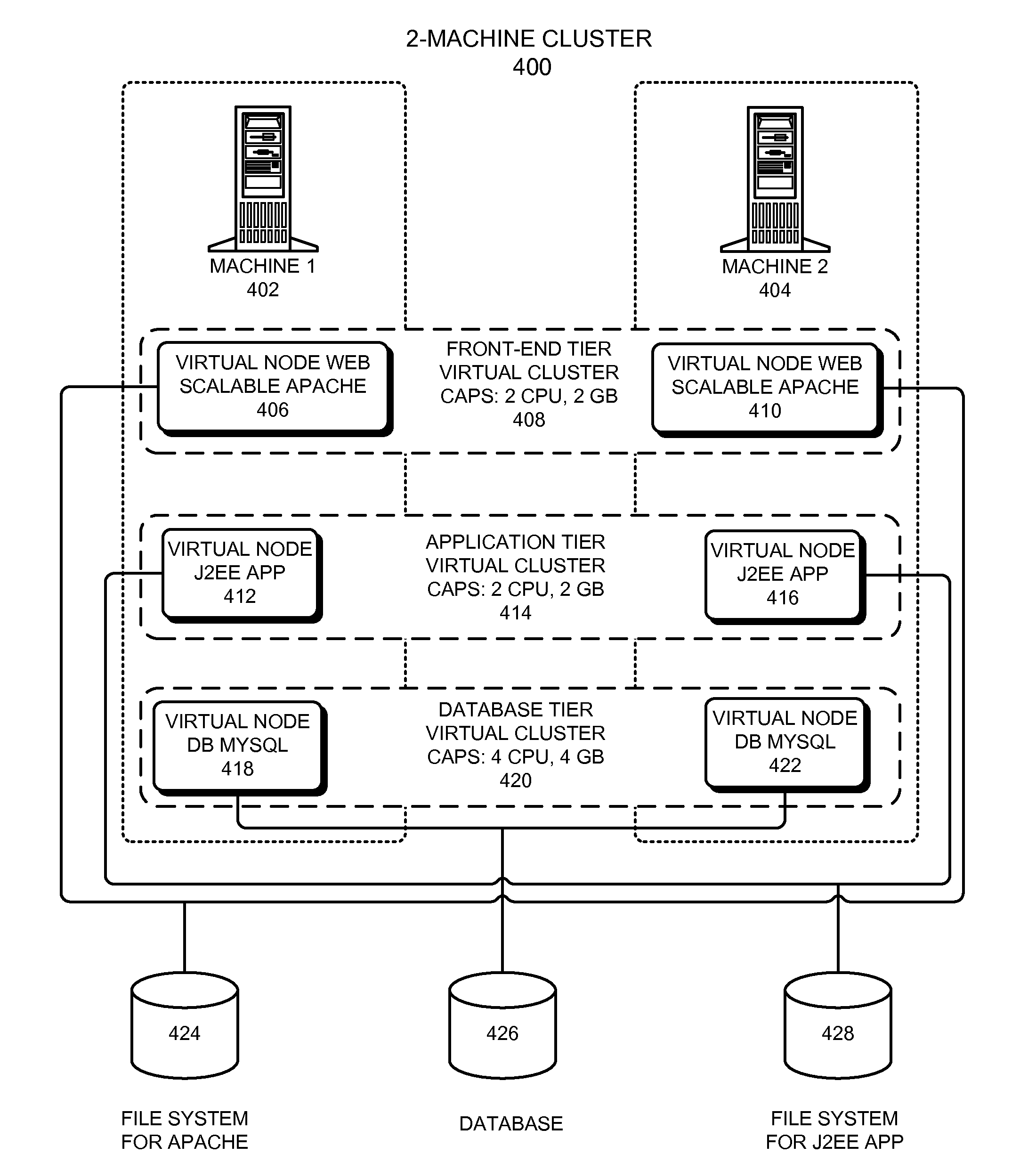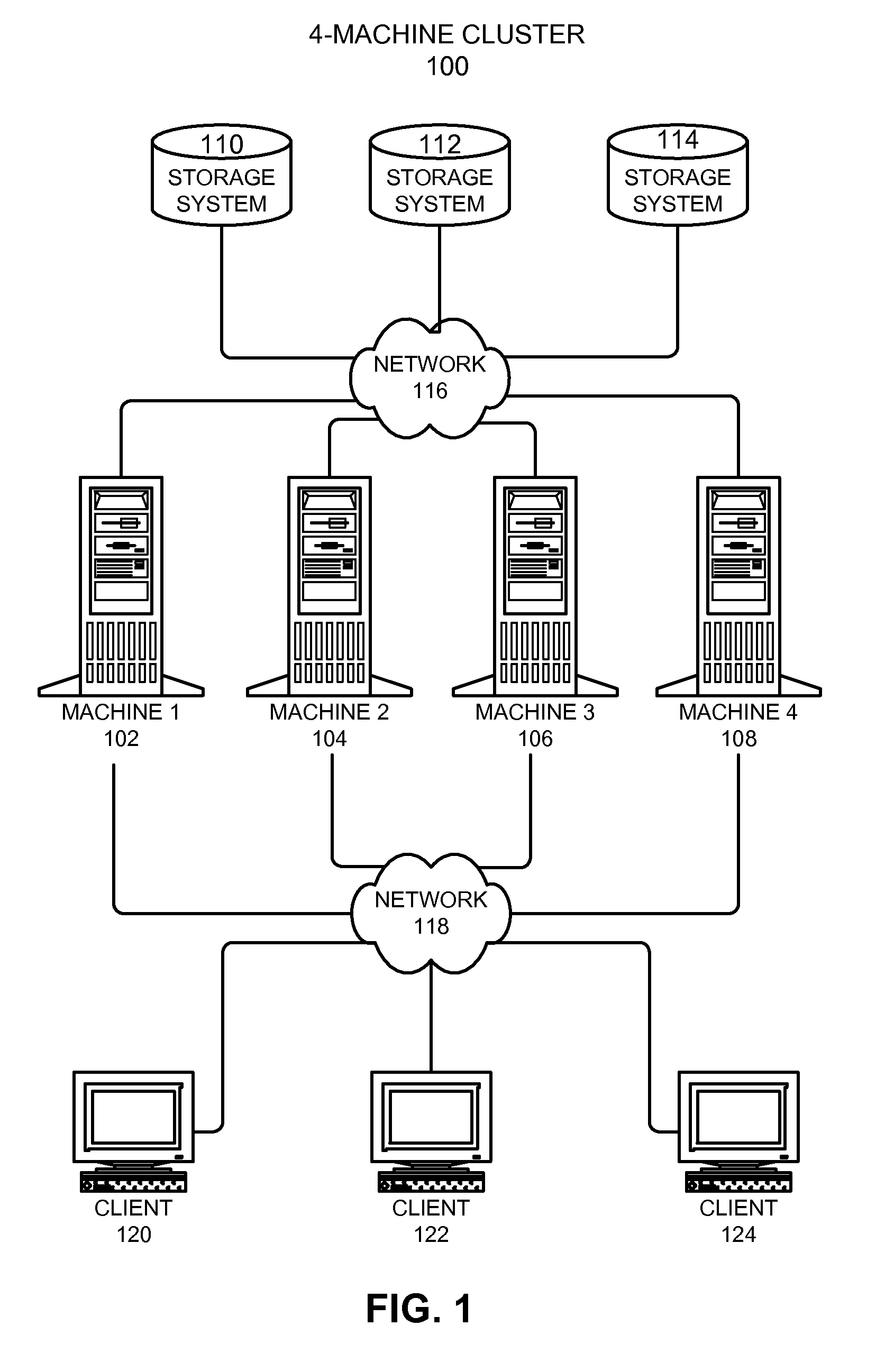Method and system for migrating the state of a virtual cluster
a virtual cluster and state technology, applied in the field of clustered computer systems, can solve the problems of large surplus capacity, many physical clusters now sit mostly idle, and demand has grown at a much slower rate than processing capacity
- Summary
- Abstract
- Description
- Claims
- Application Information
AI Technical Summary
Benefits of technology
Problems solved by technology
Method used
Image
Examples
Embodiment Construction
[0036]The described embodiments include a system that migrates the state of a virtual cluster from one system to another. More specifically, the described embodiments capture the configuration and application state of a virtual cluster on one computer system, transfer the captured state to a second computer system, and instantiate the captured state on the second computer system.
[0037]Generally, a group of computers which are working together are referred to as a cluster of computers (also called a “cluster”), or a distributed system. In such a cluster the computers (or “nodes”) are typically independent and interconnected, and cooperate to maintain shared state. Clusters are useful because, among other things, they allow the sharing of information and resources over a potentially wide area and serve numerous customers. Clusters can be scaled by incrementally adding nodes. They can be highly available—when one node fails, another node can take over the service and provide potentiall...
PUM
 Login to View More
Login to View More Abstract
Description
Claims
Application Information
 Login to View More
Login to View More - R&D
- Intellectual Property
- Life Sciences
- Materials
- Tech Scout
- Unparalleled Data Quality
- Higher Quality Content
- 60% Fewer Hallucinations
Browse by: Latest US Patents, China's latest patents, Technical Efficacy Thesaurus, Application Domain, Technology Topic, Popular Technical Reports.
© 2025 PatSnap. All rights reserved.Legal|Privacy policy|Modern Slavery Act Transparency Statement|Sitemap|About US| Contact US: help@patsnap.com



